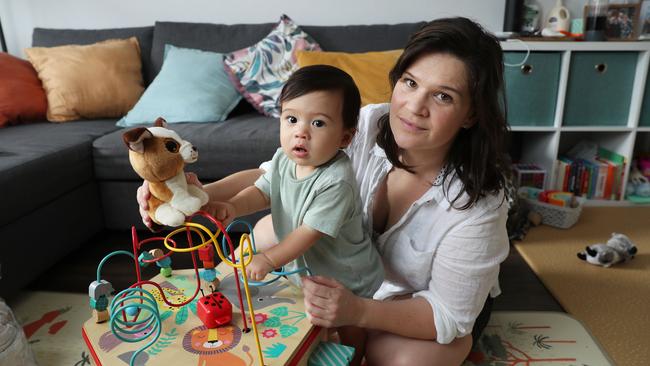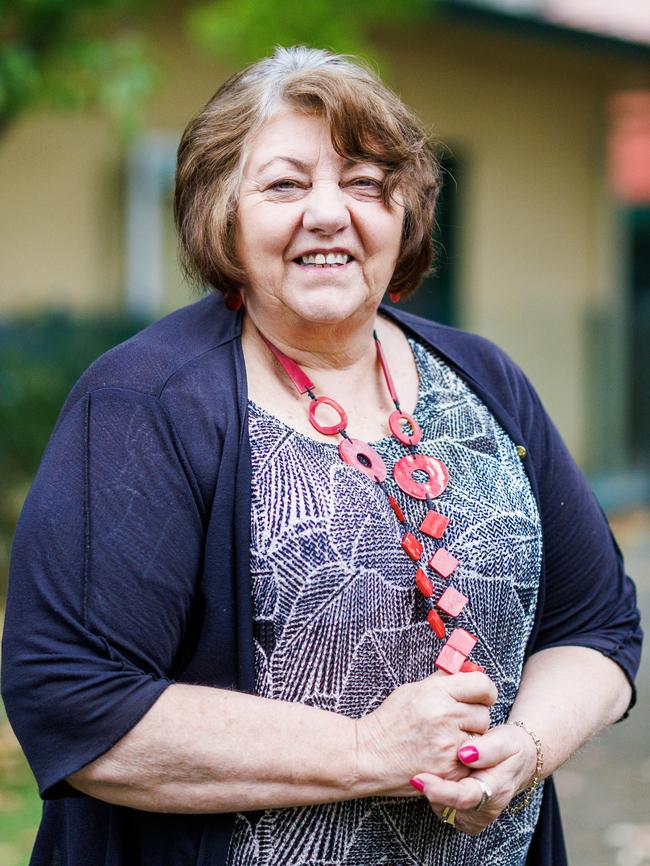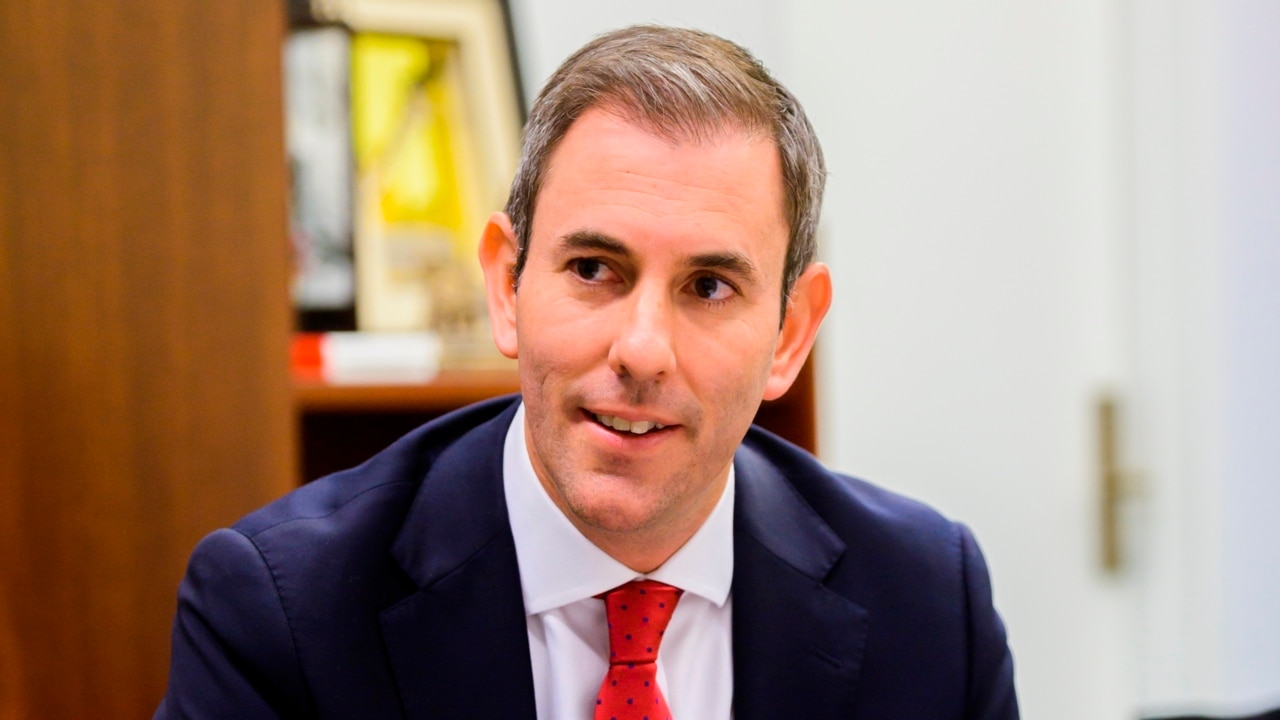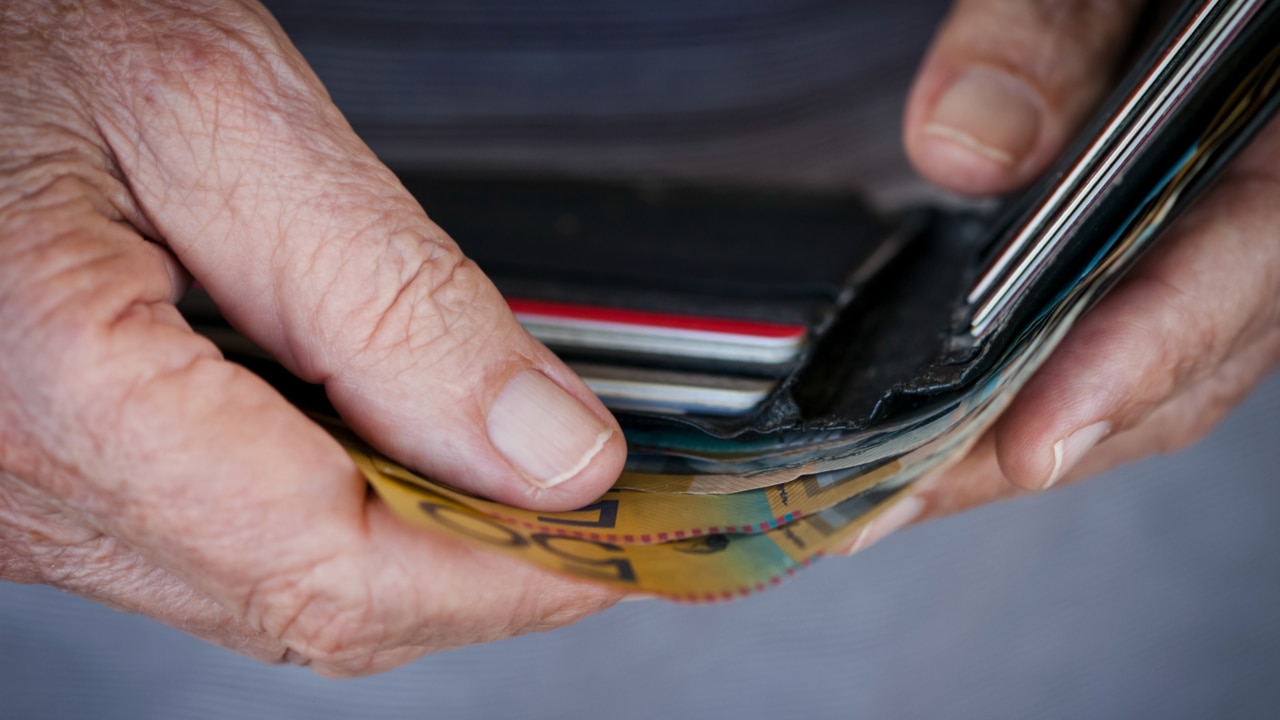How cost-of-living crisis is hurting middle-class Australia
Not only is the surging cost of living driving record demand for food relief, it has led to a significant shift in the demographics of those seeking help.

Cheryl Webster remembers the day her husband, Ian, announced their sporting store in Albury had to be sold.
It was the height of the 1990-91 recession and interest rates had soared. He drove across the NSW-Victoria border to a rival business at Wodonga and declared: “You can have my place, I’m selling.”
“Now I can tell you, I was very angry,” Webster says. “I threw receipt books at him and said, ‘We can’t do that.’ But he said: ‘I’ve just done it, Cheryl. Some money is better than none.’ Ian was a proud farmer. He said, ‘We’re not going bankrupt, that’s a dirty word, that will be against us for life.’ ”
The Websters moved to Melbourne, paying off their overdraft, “drip-feeding” $22,000 owed to creditors and settling in Emerald, 44km southeast of the CBD. Ian subsequently died after a brain tumour while Cheryl, a three-time breast cancer survivor, set up an Australian arm of Knitted Knockers, whose volunteers knit cotton prosthesis for women who have endured a mastectomy.
Since 1996, Webster has managed the Burwood Neighbourhood House, a community centre in the heart of suburban Melbourne. She says increased property prices have changed the area, on paper at least, from middle class to upper middle class. Homes bought for $200,000 are now worth $1.5m but the owners are experiencing reduced discretionary income as the cost of living bites.
Webster, 70, has set up a food bank where residents can come and take goods, including fresh bread and bags of pasta. Frozen meals are distributed. She says an increasing number of workers are coming to the centre for support.

“These are people with two incomes or self-funded retirees who are taking frozen meals,” Webster says. “They are apologetic. There’s a man who comes in after work. He said, ‘Can I have a couple more? My pay doesn’t come in until the end of the week.’ There’s a working single mum who has six children. It’s not as if she is just there for a handout.
“Interest rate increases are hurting people. Food prices have gone up. People are eating less. They are living in $1.5m to $1.7m homes but due to poor cashflow they are not turning the heating on. The food bank is on the veranda 24/7 so that means anyone can come anytime and help themselves. All we know is every day, we are filling it up.”
Not only is the surging cost of living driving record demand for food relief, it has led to a significant shift in the demographics of those seeking help. Assumptions that food support is predominantly accessed by the unemployed, single parents, disability support pensioners, the elderly and the homeless are being turned on their heads as growing numbers of working families reluctantly turn to charities to survive
“We have just seen this growth in middle-class working families,” Foodbank Victoria chief executive Dave McNamara tells Inquirer.
“Over 30 per cent of the people turning up for assistance now have never been to a charity before because they have predominantly never needed to. In fact, I talk to people who are telling me they used to donate to Foodbank and now they are relying on Foodbank. What comes with that is a huge sense of shame, a sense of failure, a sense of fear and uncertainty about what’s coming next.
“One woman told me: ‘I’m just living on two bananas a day to make sure that my kids have enough food and don’t understand what’s happening.’ That was three interest rate rises ago.”
Foodbank now operates pop-up stores and drive-throughs on weekends to ensure workers can access services. “Something like over 50 per cent of the people needing help are working families,” McNamara says. “You’ve got the bastions of (Melbourne’s) middle class like Burwood, Box Hill, even here, in the west, in Yarraville, all now running, in some cases 24/7, service provision to make sure that middle-class families that are working are able to access help in recognition of the changing dynamic or demographic of need out there.
“Parents are going out without one meal a day, sometimes two meals a day. But when they have to start sending their kids to school without food, that’s the trigger for putting their hand out for help.”
Drill down into the data and it is not hard to see why people are struggling.
Real wages fell by 4.5 per cent last year, the largest decline on record. Households paid a record $19.9bn in interest on home loans in the December quarter, while the number of people with energy debts of $2500 or more jumped 39 per cent throughout last year.
According to financial comparison website RateCity, the average owner-occupier with a $500,000 mortgage at the start of the Reserve Bank’s 10 interest rate rises, and with 25 years remaining on their loan, has seen monthly repayments rise by $983 to $3318, a 42 per cent increase since May last year. Rents were up 10.1 per cent in the year to February.
The Australian Bureau of Statistics says electricity prices rose 17.2 per cent across the year to February, and consumers have been told to expect increases during the next financial year of between 20 per cent and 22 per cent, and in Victoria 30 per cent.

The annual consumer price index movement of 7.8 per cent last year was the highest since 1990. But wages increased by only 3.3 per cent. The price of food and non-alcoholic beverages rose 9.2 per cent, with bread and cereal products up 12.9 per cent, dairy products up 14.4 per cent, and fruit and vegetables rising by 9.8 per cent. Research by investment bank UBS showed a 24 per cent price increase for cheese and 18 per cent for butter.
More than two million households across Australia ran out of food in the past year and on any given day more than a half-million households struggle to meet their food needs. More than half of food-insecure households had someone in paid work.
Foodbank’s school breakfast program operates nationally, including at 1000 schools across Victoria, where meal numbers jumped by a staggering 40 per cent plus last year.
McNamara says middle-class working families are feeling the increases in the non-discretionary parts of their budget, including interest rate rises and higher utility costs. “It’s also fuel costs,” he says. “You have got families that have bought around that urban fringe of Melbourne. While interest rates were so low and they were working from home, everything was fine, but now interest rates have gone up and they need to use their car more.”
The national average price for unleaded petrol was $1.18 a litre in January 2021, rising to a peak of $2.21 a litre in June last year and coming in at $1.82 a litre last month. Australasian Convenience and Petroleum Marketers Association chief executive Mark McKenzie expects the price, barring unforeseen events, to fluctuate between $1.70 a litre and $2.10 a litre for the remainder of this year.
-
‘A lot of the cloth nappies we use are second-hand, a lot of the clothes he wears are second-hand. I’m just trying to wear my clothes to the death. I have cancelled my gym membership because of costs.’
-
ACTU polling of 3000 people in February found one in four was skipping meals because of cost-of-living increases, and more than half had used their savings to pay for daily expenses.
According to the Salvation Army, the “rising cost of living is now the leading reason people come to our emergency relief services”. The Brotherhood of St Laurence, currently researching how people on lower incomes are making ends meet, says participants speak extensively about the rising cost of living. “We are absolutely drowning compared to five years ago,” one says. “I use BNPL (buy now, pay later) through the week to get the kids’ school lunches or top-up school snacks and things like that.”
Suicide Prevention Australia says almost half of all Australians reported elevated distress from cost-of-living pressures and personal debt, a significant increase since December.
Data from Lifeline’s search engine shows there were more than 26,000 searches for assistance and support in January across Australia, the highest on record.
Financial counsellors say parents in dual-income families are skipping meals when they face a choice between feeding themselves or their children. For households without children, it can be a choice between meals and keeping the lights on.

Anne Holmes, who works for Lifeline Harbour to Hawkesbury Sydney and has been a financial counsellor for 23 years, says the biggest issue is mortgages and rent increases affecting people and their ability to afford to live. “I have had three clients in the last three months who couldn’t afford to have third-party insurance and had accidents and they were to blame,” she says. “Because they had never had an accident they thought that was something they could let go. You shouldn’t be driving your car if you don’t have insurance but that’s not what they’re thinking. They are really thinking: ‘I could save $400, $500 a year if I don’t have that.’ ”
Holmes counselled a heavily mortgaged couple “working executive positions during the week, and on the weekend, just to get some extra money in for the family, they are doing pizza deliveries”. She says: “(Another) one of my clients actually does do pizza deliveries and that’s what he eats, pizza, because he can’t afford food. At the end of the night, if there are pizzas left over, that’s his dinner.”
Sarah Morton, 32, a midwife and nurse, says the stress caused by interest rate rises, price increases and falling real wages “is just so hard”. “You wonder how you are going to pay for anything,” she says. Morton has been on maternity and annual leave, caring for her child, Freddie, now 11 months, at a small unit in the Wollongong, NSW suburb of Bellambi. Her partner owns a landscaping business. She will return to work next month, working two 12-hour shifts a week, at Wollongong hospital.
“We’re trying to cut costs everywhere we can,” she says. “A lot of the cloth nappies we use are second-hand, a lot of the clothes he wears are second-hand. I’m just trying to wear my clothes to the death. I have cancelled my gym membership because of costs.
“We are not buying coffees and meals out. We are not buying extravagant gifts, or gifts at all, for birthdays or celebrations. We are just sticking to the bare minimum of what we need, limiting unnecessary spending.

“Our savings are going down and down and down, so the idea of upsizing and either selling or renting is just not an option. With a huge mortgage and tiny place, you have just got to sit and live on top of each other. It’s not as bad as many, let’s be honest, but seeing the amount of interest we are paying increase so much every time, it’s pretty stressful.”
Morton, a delegate with the NSW Nurses and Midwives Association, says her wages have “just not been growing the way they should”. “It’s really hard to read how businesses like Woolworths are making massive profits and we’re just dealing with the cost of higher groceries,” she says.
“Sure, businesses need to make a profit, but do they need to make that much of a profit when our wages really aren’t going to cover essentials soon?”
David Bradbury, 60, a prepress operator in Adelaide, says he has not had a pay rise since 2019 when he received a 1.5 per cent wage increase. “Without being rude, it’s virtually bugger-all,” he says. “People bring up the cost of their mortgages and having to pay all these bills. They’re not going down. They’re just going up and up and up.”
Mark O’Sullivan, a teacher for 28 years, sees cost-of-living pressures play out at his local Dandenong supermarket in Melbourne.
“You see more people leaving stuff at the counter,” he says. “You hear things in the aisles like, ‘Oh no, we can’t afford that this week’, and you hear more of that than we have heard for a while. The price of food has skyrocketed in the last year.”
Holmes says people are borrowing from moneylending organisations that offer easy access to cash but have interest repayments up to 48 per cent.
“When we see people come in with three or five of those plus normal credit cards and personal loans they have accumulated over the years, once they get to that stage it’s almost impossible for them to do a catch-up because of the high repayment and interest factor,” she says.
“I think now there are a lot of people who are feeling like it’s a sort of hopeless situation: their wages haven’t gone up, their cost of living has. For a lot of people they can no longer do the basics: accommodation, food, a phone and keep a car on the road. They’re very basic things that we all assume we’ll have these days.

“Seeing a financial counsellor, which is a free service, as early as possible gives them more options going forward.”
McNamara says given the tight employment market, wages have gone up for some workers performing highly skilled roles. “But the wage levels of blue-collar workers, you’re not seeing a significant increase,” he says. “It’s certainly not matching the inflation rate … and you’re certainly not seeing wage growth at 9 per cent to match food inflation. People are moving backwards, not forwards.”
McNamara says when he started at Foodbank 15 years ago, demand largely came from the homeless, those on disability pensions and single parents.
“Over this period I have seen suddenly the working poor and now middle class enter that dynamic of need,” he says. “If you chart this over 15 years you see this isn’t just an economic issue, this is a social cohesion issue. It’s a disintegration. We are seeing a societal diminishing of the middle class.
“My worry is what the next year to two brings … I’m always hopeful and inspired by the community and their resilience and their ability to support each other, but I have gone through a GFC, I have gone through droughts, floods, bushfires, and I haven’t seen it like this.”
Ask Webster to compare the recession that Paul Keating said Australia “had to have” to the current cost-of-living pressures, and she says in some ways it feels worse now. “It’s scary,” she says. “I think life is now harder for everyone. You are competing with so many for work. The mortgages are so dear. Rent is so expensive and you have to compete for rental properties. We paid $190,000 for an acre and a quarter, nice property in Emerald. It’s worth a million something now. I don’t want to be doom and gloom but I just see that things are getting tougher and tougher.”






To join the conversation, please log in. Don't have an account? Register
Join the conversation, you are commenting as Logout